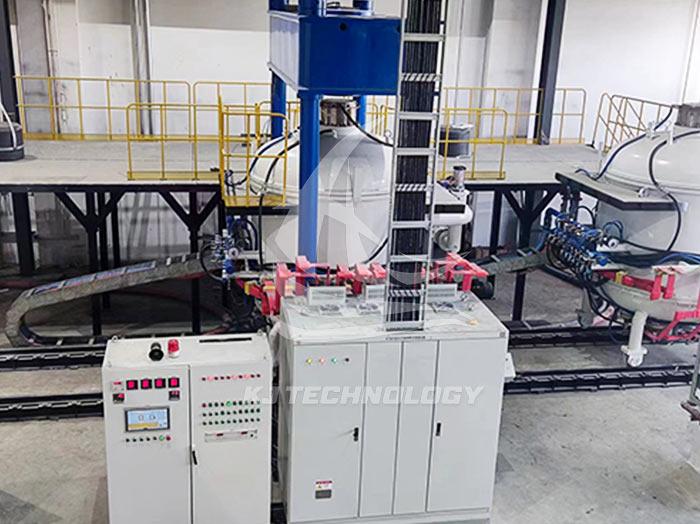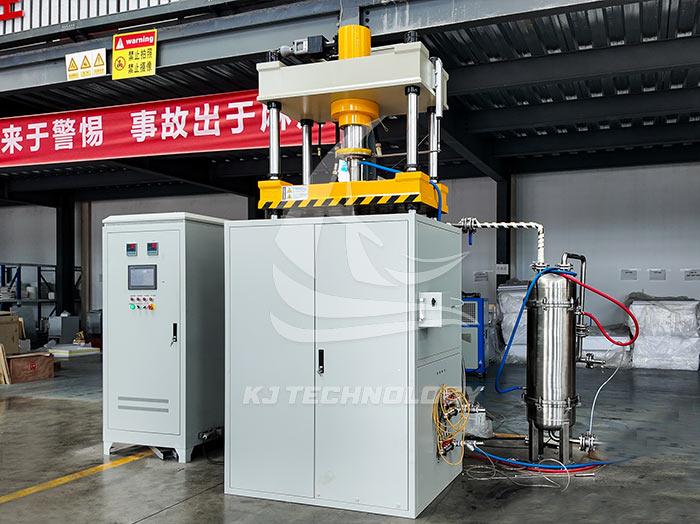The vacuum degree of the high vacuum and high temperature brazing electric furnace cannot be increased
 08-26-2025 Author: KJ technology
08-26-2025 Author: KJ technology
The vacuum degree of the high vacuum and high temperature brazing electric furnace cannot be increased, which may be caused by aging seals, vacuum pump failure, system leakage, or damage to the vacuum gauge. The following are specific analysis and solutions:
1. Possible cause analysis
Sealing component issue
Aging or damage of seals: Long term use or high temperature environments may cause seals (such as rubber rings, O-rings) to age, crack, or deform, thereby reducing sealing performance.
Improper installation of seals: Improper installation or compression of seals may result in gas leakage.
vacuum pump failure
Decreased efficiency of vacuum pump: After long-term use, internal parts wear or oil contamination of the vacuum pump may lead to a decrease in pumping efficiency.
Insufficient or contaminated vacuum pump oil: Insufficient or contaminated vacuum pump oil can affect the pumping performance of the pump.
Vacuum system leakage
Poor valve sealing: Valves in vacuum systems (such as roughing valves and high valves) may leak due to aging or damaged sealing rings.
Loose pipeline connections: Vacuum pipeline connections may become loose due to vibration or thermal expansion and contraction, resulting in air leakage.
Furnace leakage: Cracking of furnace welds or poor sealing of furnace doors may also lead to a decrease in vacuum degree.
Vacuum gauge malfunction
Damage to the resistance gauge or ionization gauge of the vacuum gauge: The vacuum gauge is a critical component for measuring vacuum degree, and its damage can result in inaccurate display values or inability to evacuate.
2. Solution method
Check and replace the seals
Check the condition of the seals: Regularly inspect the seals for aging, cracking, or deformation, and replace them promptly if there are any issues.
Ensure correct installation of seals: Install seals correctly according to the equipment manual and ensure even clamping force.
Repair or replace the vacuum pump
Check the operating status of the vacuum pump: Observe whether there is any abnormal noise, vibration, or heating phenomenon in the vacuum pump, and if so, repair it in a timely manner.
Replace vacuum pump oil: Regularly replace the vacuum pump oil to ensure that the oil quality is clean and the oil volume is sufficient.
Clean or replace the internal parts of the vacuum pump: If the internal parts of the vacuum pump are severely worn, they should be replaced in a timely manner.
Check and repair the leakage point
Using a vacuum leak detector: Conduct a comprehensive leak detection of the vacuum system using a vacuum leak detector to identify the leak point.
Repair the leakage point: Based on the leak detection results, replace the damaged valve sealing ring, tighten the pipeline connection, or repair the furnace body weld.
Check and replace the vacuum gauge
Proofreading vacuum gauge: If there is suspicion that the vacuum gauge display is inaccurate, a standard vacuum gauge can be used for calibration.
Replace the vacuum gauge tube: If the vacuum gauge tube is damaged, a new tube should be replaced in a timely manner.
3. Preventive measures
Regular maintenance of equipment
Develop equipment maintenance plan, regularly inspect and replace vulnerable parts such as seals and vacuum pump oil.
Regularly clean the dust and impurities in the vacuum system to keep the system clean.
Standardize operational procedures
Strictly follow the equipment operating procedures to avoid equipment damage caused by unauthorized operations.
Ensure that the furnace door is tightly closed before vacuuming to avoid air leakage.
Strengthen equipment monitoring
Pay close attention to changes in vacuum degree during the vacuuming process, and promptly handle any abnormalities found.
Record equipment operation data to provide a basis for troubleshooting.








